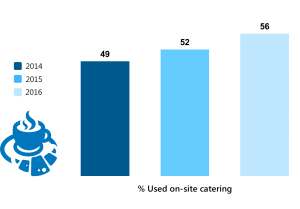For the last three years BDRC's low cost VisitorVerdict programme has processed over 17,000 surveys from visits to over 100 regional museums and attractions up and down the country. In this blog, we use our visitor benchmarking programme to highlight some trends which give us a better understanding of the progress of the sector, its place in society and what we can be doing in 2017 to be more successful.
Visitors still not reflective of society
Initiatives to cultivate younger, more representative audiences have made little or no difference to visitor profiles in recent years. The dominance of mature white AB, higher socio-economic audiences with no children in their party remains.
� Last year 63% of visits were by AB visitors to attractions, with little change from year to year, yet only 22% of the UK population is classified as AB*
� In 2016 over 55s accounted for 48% of all visitors, whereas only 30% of the UK population falls into this group*
� Minority ethnic groups are under-represented: white people made 92% of visits in 2016, yet only represent 87% of the UK population*
*Data from ONS Census data 2011 + updates
I believe most UK museums genuinely go out of their way to cultivate a visitor profile reflective of the broader society they inhabit. These findings are a reminder of the long-term challenge they face.
Fill our bellies!
So what social changes do we see reflected in VisitorVerdict? Out of home eating and drinking has exploded in recent times. For museums and other attractions, particularly those cultivating a social visitor, the absence of an authentic quality catering proposition is tantamount to saying you don't really want people to visit your site.
It's perhaps not so surprising then, that one of the clearest behavioural trends shown in VisitorVerdict is the increased use of on-site catering. It's gone up 7% over the last couple of years.
With increased dwell time comes an increased proclivity for catering spend. Consequently with three-quarters of visitors now staying for at least an hour, there remains untapped potential. To really take advantage, attractions should ensure their catering remains grounded in strong provenance whilst keeping up with evolving tastes.
�A better visitor experience all round
Most museums and attractions join VisitorVerdict as part of a longer term commitment to improve their visitor experience and find solutions that best develop their audiences. Often they lack the funds for bespoke research yet still require insight to help them direct resources appropriately to affect business change. We've found that consistent users of VisitorVerdict over the last three years have managed to improve their scores on key experience metrics: propensity to recommend, value for money, delivery against main motivation and overall enjoyment. These are metrics that correlate with business success.
This is some reward for the hours of effort staff and volunteers put into optimising experiences for visitors. However, with the bar being raised across the board, regional museums and attractions can no longer presume that by improving visitor experience they will automatically improve business success as well. Yes, people want to visit and re-visit the places that provide a good time and they may be more willing to spend more for that experience. But visitors now have better choice overall. And, in that sense, regional museums and attractions are in the same situation as any other business.
You will never lose business by improving the visitor experience. But to grow the business, you need more visitors to choose your improving destination over other improving destinations. And to do that you need good marketing. Not only can VisitorVerdict help you pinpoint investment that improves visitor experience, it can inform effective marketing and communications strategies that genuinely grow your visitor base.
For more information about some of the trends emerging from VisitorVerdict and to find out more about joining the service, please do get in touch.



